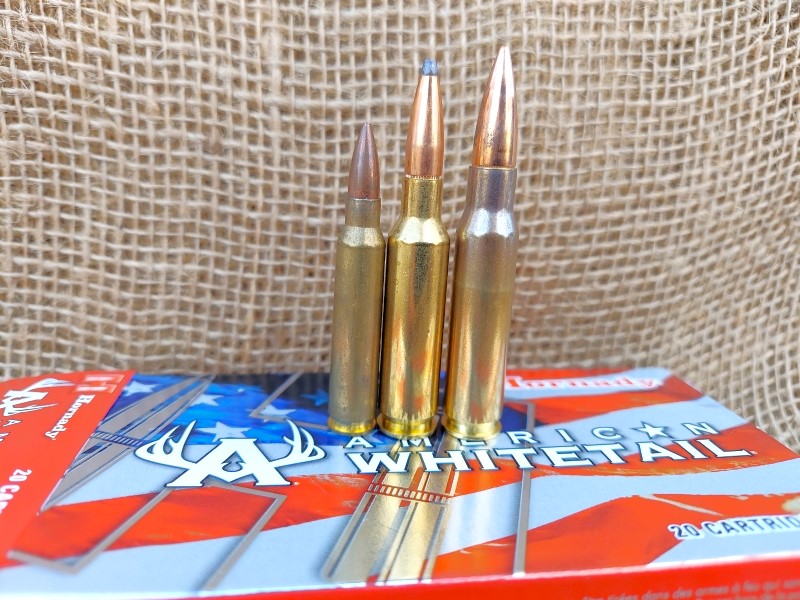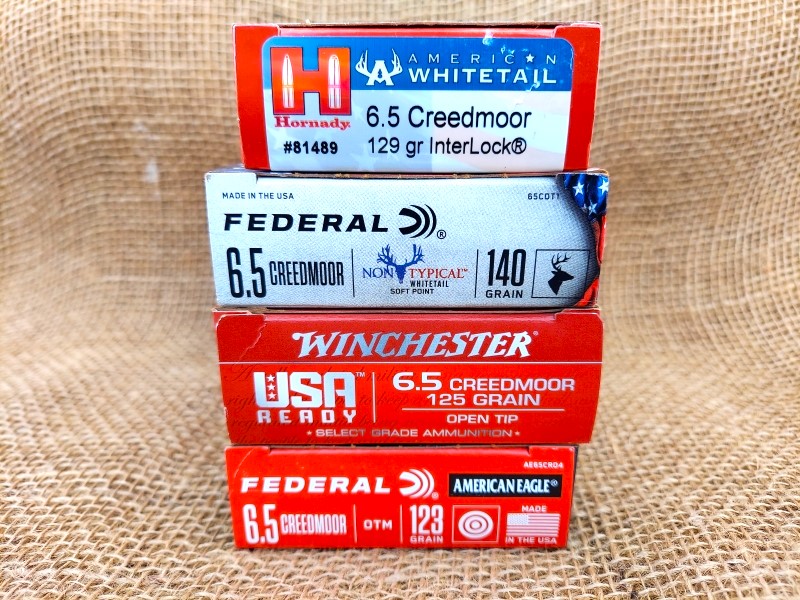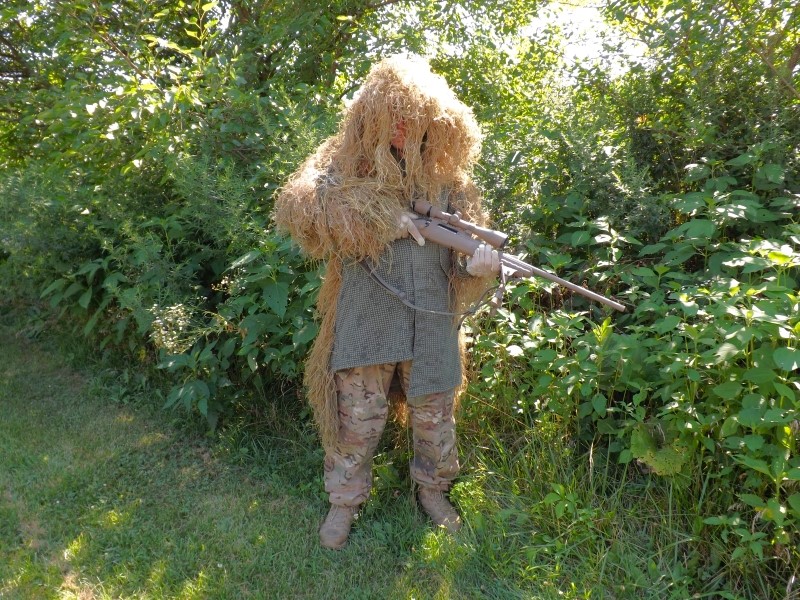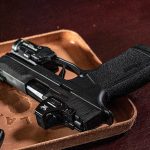The Choice For Many Long-Range Shooters And Hunters

What makes the 6.5 Creedmoor so special? Is it really that effective for long-range engagements? I must admit that I was not a huge proponent of the 6.5 Creedmoor at first. I figured it was one of those fad cartridges that would come and go before we could blink.
Beyond that, I’m one of those “If It Ain’t Broken, Don’t Fix It” types of guys. After all, don’t we have enough calibers out there? Goodness gracious, there are a couple of dozen calibers that I’d love to have and haven’t even gotten to yet in my shooting career. And here they came out with yet another line (the various Creedmoor). Did we really need more calibers? Mind you, I didn’t hate the 6.5 Creed, I just yawned and ignored it.
It wasn’t until I was in my favorite gun shop and the owner showed me a target that he shot with a rifle in 6.5 Creed that my eyes were opened. I was astonished at the tight group and the standard rifle that he’d used to do it. Maybe there was something to this caliber, after all. I do adore accuracy!
Long story short, I ended up with that exact rifle that he was talking about. More on that a bit later.
What It’s Not
Before we get into all the details, let’s talk about what the 6.5 Creedmoor is not. It isn’t a magic death ray that will turn targets into a pink mist. The terminal performance on targets is effective in most cases, though it’s not exactly the cartridge of choice for putting down elephants and rhinos. Used within its limitations, it is a good round. There are other cartridges that can beat it in velocity and retained velocity at long ranges, but those cartridges have their own drawbacks—most often recoil.
Details
The round is derived from necking down the .30 Thompson Center cartridge. Initially, the 6.5 Creedmoor was intended as a long-range competition shooting round. The .264 caliber exhibits a high ballistic coefficient, which contributes to aerodynamic flight. A high Ballistic Coefficient (BC) permits the bullet to slip through the air with minimal disturbance.
Because of its overall length, the 6.5 CM will fit into short actions, which is a plus because the overall rifle can be kept shorter. It also has a shorter bolt throw, making the action faster to operate.
6.5 Creedmoor Ballistics
The 6.5 Creed is a medium-powered round. These days, many of the rounds that get recognition are of very high, screaming velocity. Not so with this one; it’s what I’d refer to as “tame.”
Despite modest velocities, the 6.5 CM can maintain supersonic speed past 1,200 yards.
The reasonable velocities also contribute to longer barrel life, unlike the extremely high velocities of some other rounds. This is especially advantageous for competitive shooters, who normally put a lot of rounds downrange through their rifles.
Most loads for the 6.5 CM are between 120 and 145 grains. It tends to hold velocities better at long range than many other cartridges.

Here are some numbers for Hornady’s 129-grain SST rounds:
- Muzzle: 2,950 fps.
- 100 yds: 2,756 fps.
- 200 yds: 2,571 fps.
- 300 yds: 2,394 fps.
- 400 yds: 2,223 fps.
- 500 yds: 2,059 fps.
- 1,000 yds: 1,367 fps.
Here are some figures for Hornady’s 143-grain ELD-X Precision Hunter:
- Muzzle: 2,700 fps.
- 100 yds: 2,557 fps.
- 200 yds: 2,419 fps.
- 300 yds: 2,285 fps.
- 400 yds: 2,156 fps.
- 500 yds: 2,030 fps.
- 1,000 yds: 1,478 fps.
The 6.5 Creedmoor shines at longer distances because it retains speed and energy better than many other rounds on the market.

To be clear, there are rounds that will beat it at closer ranges, including the .25-06 and the .270 Winchester. However, the 6.5 CM performs with less recoil and powder and is more efficient. At 1,000 yards, the 6.5 beats the .25-06 in retained velocity. The .270 can equal or beat the 6.5CM at 1,000 yards but at the price of more recoil.
Personally, I don’t have a place to shoot my rifles out to 1,000 yards. So for me, I can’t realize the maximum benefits of the 6.5 Creedmoor. However, I like it for what I use it for.
6.5 Creedmoor Recoil
One thing that a shooter immediately notices when touching off a 6.5 CM round is the recoil. Or rather the lack of it. It reminds me of another of my favorite cartridges: the 7mm Mauser. The 7mm Mauser round is also lacking in recoil. I was introduced to it in 1990 at the beginning of my career in the prison system. Our Pre-.64 Winchester Model 70 rifles that were used in the gun towers were chambered in 7mm Mauser and we had to qualify on them. It was always a pleasure because of their lack of recoil.
The 6.5 CM exhibits a similar lack of recoil. Aside from being pleasant on the shoulder (it’s a gentle shove, maybe twice that of touching off a .223 round from a bolt action), it helps in accuracy. The less recoil to deal with, the easier it is to follow through. And follow through is an important aspect of marksmanship. Shooters also flinch less because of this lack of recoil. And after all, marksmanship is what this round was initially developed for.
I notice the lack of recoil most when firing from the prone position. Firing heavier calibers such as the .308 prone can become unpleasant after several dozen rounds. Doing that for a week or more on the sniper range, the old shoulder will be protesting.
Not so with the 6.5 Creedmoor. It’s just a pleasant little shove, time after time. This fact greatly reduces shooter fatigue, so shooters can fire more rounds easily. Additionally, follow-up shots are faster due to the lower recoil.
Accuracy
What sold me initially on the 6.5 Creedmoor was the accuracy. The guy I bought the rifle from showed me a 200-yard target that he’d shot with the rifle (a Ruger American Predator), and I was astounded. I asked him if he wasn’t mistaken, i.e., did he shoot the target he was showing me at 100 yards? He assured me that it was 200.

After I had the rifle in my possession, I took it to the range and checked for myself. Sure enough, at 200 yards, the rifle is a tack driver. My first group with it was 1 1/8 inches. What made it really amazing is that the ammunition I used was just regular hunting-grade ammunition: Hornady American Whitetail 129 grain Interlock.
There are even more accurate rounds out there. Specifically, competitors are using rounds that are more consistent than regular hunting rounds and getting some spectacular results with them. I’ve watched videos of people using the Ruger American Predator to hit targets one mile away!
Expecting groups that are less than 1/2 MOA is not out of the question.
Hunting With 6.5 Creedmoor
By all accounts, hunters using the 6.5CM for medium-sized game are having good results. Large game can also be taken with it, but shot placement has to be very precise. The good news with the 6.5 is that it delivers in the accuracy department, so shooters have the ability to be surgical with shot placement.
It’s a great round for whitetail deer and hunters have been taking game up to elk size with it as well. Hornady and other ammo makers have some excellent hunting rounds available these days for the 6.5 Creedmoor.
Ammunition
Many long-range competitors will be using hand-loaded ammunition for their endeavors. There is also match-grade ammo available on the shelves for competition. Most manufacturers are making good hunting rounds as well, including Hornady, Winchester, and Federal.
Currently, prices on rifle caliber ammunition, especially hunting ammunition, is very high. It’s not unusual to see it on shelves for between $2 and $4 per round. In that respect, the 6.5CM is right up there with the rest of them (which is to say, it’s about average in price).
As for availability, I see it in every place that I go that sells ammunition. Like it or not, it’s now a popular round and it is widely available. To me, that’s a good thing.
Ultimately
Personally, two of my favorite aspects of the 6.5 Creedmoor are the very low recoil and the accuracy. Both are astounding! And both are why I love this round. The other advantages are merely gravy.
It’s rare that I embrace a new-fangled, modern round. Normally, I pass them by because there’s almost always something that’s already been invented (usually a long time ago) that’s already doing the same thing just as well. Just because it’s new doesn’t mean it’s better.
However, for the 6.5 Creedmoor, I made an exception. It fits into short actions, and uses a moderate charge of powder to propel its not-very-heavy cartridge at unimpressive velocities, but manages to retain a very impressive velocity at long range.
Personally, I like this cartridge a lot!
How about our readers? Who out there has experience with this round? Do you love it or hate it?


